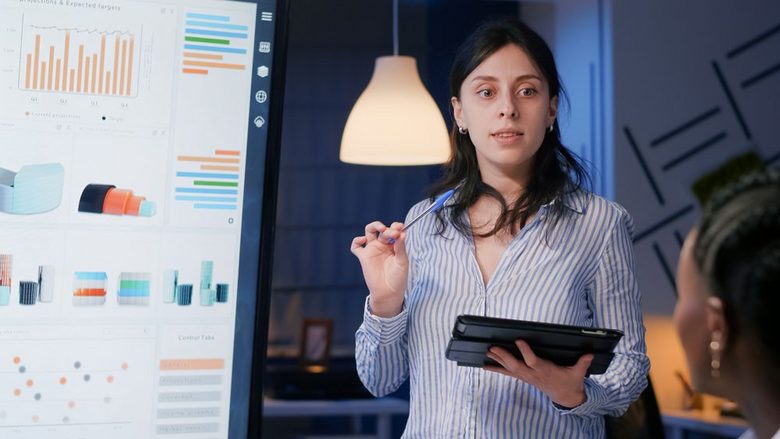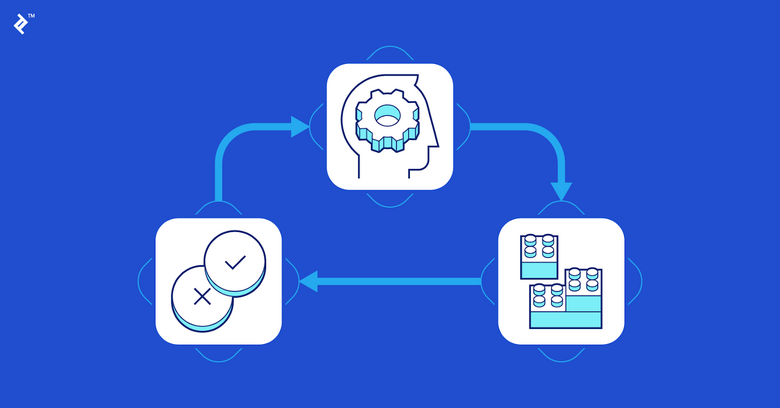Design thinking is a problem-solving process that can be used in a variety of situations, from developing a new product to improving customer service. At its core, design thinking is all about creativity and collaboration. By working together, teams can come up with innovative solutions to problems that they might not have been able to come up with on their own.

Table of Contents
What is design thinking?
To begin with, design thinking is an iterative process that involves developing solutions collaboratively, testing them quickly and frequently, and adapting to feedback along the way. This creative process helps teams to generate innovative ideas and solutions that they might not have been able to come up with on their own.
One key aspect of design thinking is the concept of “minimum viable product.” This refers to a product that is developed quickly and inexpensively but still contains all of the essential features that allow it to be tested and evaluated. By building out a minimum viable product first, teams can get feedback from early users and refine their product before investing more time and resources into it.
How can it help you create a better MVP
One advantage of using the design thinking process when developing a minimum viable product (MVP) is that it helps teams to think creatively and collaboratively about possible solutions. By involving multiple team members in the problem-solving process, they can leverage different perspectives and ideas to come up with innovative solutions that may not have been apparent otherwise.
Additionally, this iterative process allows teams to test and refine their MVP quickly and frequently, which helps them to adapt their product based on feedback from early users. Ultimately, incorporating design thinking into your MVP development can help you create a better product in less time and with fewer resources.
Another key advantage of using design thinking when developing an MVP is that it helps to ensure that your product meets the needs and expectations of your target users. By putting yourself in the shoes of your customers, you can better understand what they are looking for from your product, and use this feedback to refine your MVP over time. This focus on customer-centered design can help you develop a more successful product that meets the needs of your end users.
Key steps of the design thinking process
It can be used as a powerful framework for developing a better minimum viable product. From generating creative ideas to testing and refining your product, these steps can help teams to come up with innovative solutions that meet the needs of their customers and users. By incorporating design thinking into your MVP development process, you can create a more successful product in less time and with fewer resources.
- To get started with design thinking, the first step is to generate creative ideas and solutions through brainstorming and collaboration. This may involve gathering input from a range of stakeholders, including end users, fellow team members, and subject matter experts.
- The next step is to quickly create prototypes or mockups that can be evaluated by potential users or customers. This helps to validate your ideas and quickly identify any flaws before investing more time and resources into them.
- Once you have developed a prototype, the next step is to test it with potential users or customers and gather feedback on its strengths and weaknesses. By incorporating this feedback into your product development process, you can further refine and improve it.
- Finally, the last step is to iterate on your product based on this feedback, making any necessary changes or improvements along the way. This process of continuous iteration can help teams to develop a better MVP that more closely meets their users’ needs and expectations.
To summarize, the design thinking process is a powerful framework for developing innovative solutions and creating better minimum-viable products. By working together to brainstorm and collaborate, teams can generate creative ideas that they might not have been able to come up with on their own. In short, incorporating design thinking MVP development can help you to create a better product in less time and with fewer resources.
Benefits of using design thinking to create your MVP
One key benefit of using design thinking in your MVP development process is that it can help teams to be more creative and innovative. By tapping into the ideas and perspectives of multiple team members, you can come up with unique solutions that may not have been apparent otherwise.
In addition, using this iterative approach helps teams quickly test and refine their MVPs, which enables them to fine-tune their products based on feedback from early users. This can help you to create a better product in less time and with fewer resources, making the design thinking process an effective framework for developing minimum viable products.
Overall, incorporating design thinking into your MVP development process can help teams to be more efficient and effective in their product development efforts. Whether you are just starting or looking for ways to further iterate on your existing MVP, design thinking can help to accelerate the process and boost your chances of success.
Tips for getting started with design thinking and MVP development
We gathered a few tips to help you get started with design thinking and MVP development:
1. Start by gathering input from a range of stakeholders, including users and subject matter experts, to generate creative ideas and solutions.
2. Once you have developed your initial MVP prototype, test it with early users or customers to gather feedback and identify potential areas for improvement.
3. Keep iterating on your product based on this feedback, making any necessary changes or improvements along the way.
4. Consider seeking out additional guidance or support from experts in design thinking and MVP development to help you get started and stay on track as you work through these steps.
5. Finally, be persistent and patient as you work through the design thinking process. While it may take some time and effort to get started, the result is a better MVP that more closely meets your users’ needs and expectations.
Overall, whether you are just starting with design thinking or looking for new ways to improve your MVP development process, these tips can help you get started and make the most of this powerful framework. By embracing creative thinking and collaboration, you can develop a better product that meets users’ needs and sets yourself up for success in the long run.

Final Thoughts
At the end of the day, design thinking and MVP development are powerful tools for helping teams to innovate and create better products. By tapping into the collective knowledge and expertise of your team members, you can come up with innovative ideas that may not have been apparent otherwise. And by incorporating continuous iteration into your product development process, you can refine and improve your MVP over time to create the best possible solution for your users. So if you are looking to innovate and build a better minimum viable product, consider using design thinking as part of your development process.











Leave a Reply